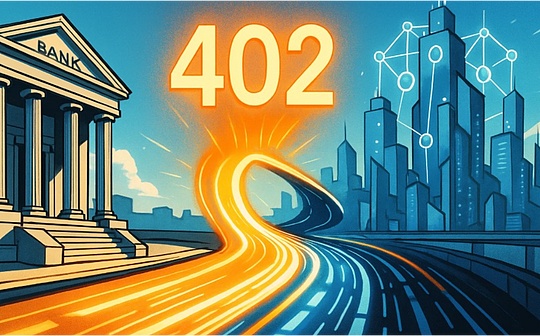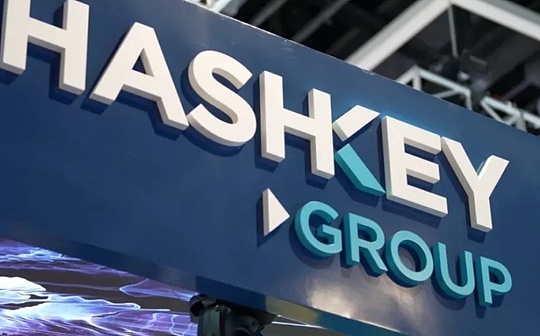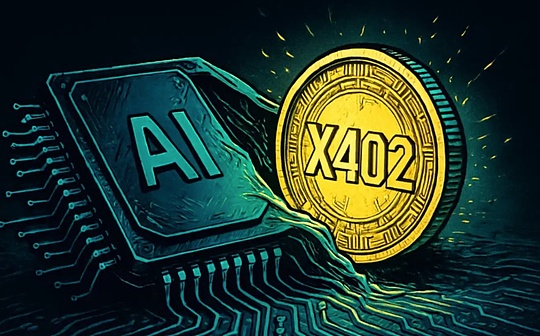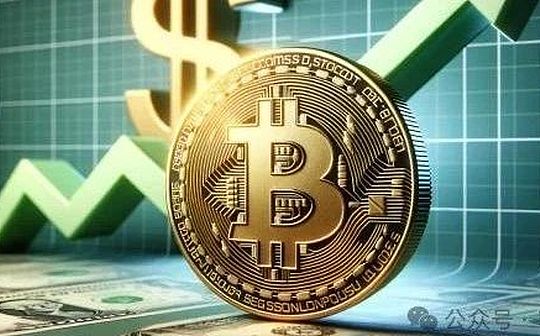
Author: Jason Jiang, OKG Research

From Bitcoin spot ETFs to the tokenization wave, institutional power represented by Wall Street is profoundly affecting and changing the direction of the crypto market, and we believe that this power will become stronger in 2025.OKG Research has launched a series of research on “#On-Chain Wall Street” to this end, and continue to pay attention to the innovation and practice of traditional institutions in the Web3 field. Let’s see how top institutions such as BlackRock and JPMorgan embrace innovation?How will tokenized assets, on-chain payments and decentralized finance shape the future financial landscape?
Investment management company VanEck predicted the crypto market in 2025, boldly expected Coinbase to “take unprecedented steps to tokenize its stocks and deploy it on its Base blockchain.”Prophecy seems to be moving into reality: Jesse Pollak, the main developer of Base Chain, recently revealed that providing $Coin on Base Chain is “thing we are studying in the new year” and expects that “every asset in the world will eventually be inOn Base”.
We are not sure whether Coinbase can achieve its plans, but Wall Street is also accelerating “Onchain” when it uses its own stocks as the starting point for exploration tokenization.
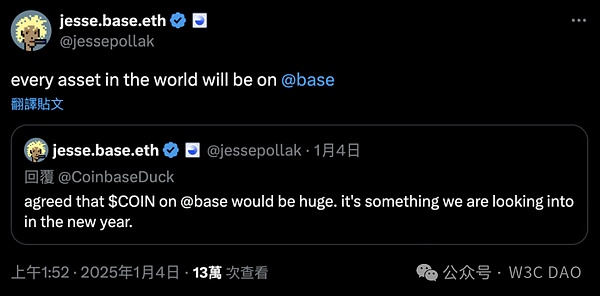
Wall Street begins to move up the chain
Since 2024, the crypto market has ushered in rapid growth and the boundaries of innovation have continued to expand.The core driving force behind this comes from the cryptocurrency spot ETFs promoted by Wall Street institutions represented by BlackRock.These institutions are now shifting more attention to the tokenization space.
BlackRock CEO Larry Fink said that while the approval of crypto spot ETFs is important, these are “stepping stones” toward wider tokenization of other assets.With the help of the tokenization boom, Wall Street is pushing more assets and businesses to be put on the chain, allowing traditional finance and crypto innovation to collide with each other in the digital space.
Although financial asset tokenization has been happening since 2017, it has only taken off wildly until recently.Unlike early explorations that focused on license chains, more and more tokenization practices are gathering towards public chains, Ethereum has become the first choice for institutional tokenization.These institutions no longer reject decentralization, but instead actively explore the radius of crypto impact, trying to provide a new experience through the recombination of assets and technologies.As Coinbase said, “Web3” is gradually being replaced by the more appropriate “Onchain”.
But this time, the protagonist is no longer just cryptocurrency, but also many assets from the physical world, such as stocks.As the largest cryptocurrency exchange in the United States, Coinbase is the most popular stock target in the tokenized market at this stage.rwa.xyz data shows that as of January 2025, the total market value of tokenized stocks was approximately US$12.55 million, of which nearly 50% of the tokenized stocks with Coinbase as the target.In addition, stock tokens such as Nvidia, Tesla and Apple, among the seven giants in the United States, also frequently appear on the chain.
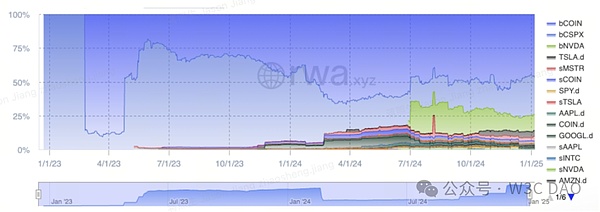
Coinbase plans to tokenize its stocks and issue them on the Base chain, which not only allows investors to trade their stocks directly on the chain, but also further integrates the trading platform, Base chain and on-chain asset ecosystem, and explores compliance and ability in the United States.The implemented stock tokenization model allows it to remain ahead in the competition for crypto financial innovation.
This layout is bound to be more than just for $COIN tokenization.Perhaps as Jesse Pollak said, they want all the assets in the world to be in the Base chain.But in comparison, allowing major global assets to accelerate on-chain migration through tokenization is the more foreseeable future.
Although tokenization is also questioned, like other innovative concepts, the concept of centering on access to democratized investment opportunities and simplifying capital flow efficiency has become deeply rooted in people’s hearts.The on-chain availability shown by stablecoins, BUIDL funds and other tokenized assets has proven value, and more and more asset classes are moving on-chain: not only the common private credit, bonds, funds and gold, but alsoThere are agricultural products, carbon points, rare minerals and other assets.
According to the Ouke Cloud Chain Research Institute, in 2025, we will see Wall Street continue to “Onchain” frequently and promote the tokenization system to be richer and more mature: not only the on-chain tokenized assets of non-stable coins will exceed at least 30 billionThe US dollar will also see more companies entering the tokenization field under the leadership of Wall Street and bringing more valuable assets to the chain.Although the tokenization scale of these assets may not be “exaggerated”, it still means a lot.
Moving towards a more democratic future
60 years ago, when you purchased financial securities or used them as collateral, you might have to wait 5 days before you receive paper vouchers before you can confirm the transaction; later, more and more paper vouchers and transaction settlement became unmanageable, which forced Wall Street to beginTry using a computer to track securities.

Getting competitive trading advantages from better or faster technologies is now part of the ubiquitous presence of modern finance.Whether it is BlackRock and Goldman Sachs, Citigroup and JPMorgan Chase, almost everyone on Wall Street believes that tokenization is the future trend and is embracing the changes brought about by tokenization.Compared with the passiveness of financial informatization, tokenization is the next step of change that finance actively embraces.
In this change, deploying assets on the chain through tokenization is no longer a problem. The challenge in the future lies in how to increase the demand for tokenized assets and thus solve the on-chain liquidity problem.The unrivalled success of traditional securities is largely attributed to their high liquidity and low transaction costs. If tokenized assets are simply locked on the chain or can only be in secondary markets with limited liquidity, their actual value will also beVery limited.
Nadine Chakar, who once managed the digital assets division of State Street Bank, once expressed a similar view, “The bank cooperates with a company to issue tokenized bonds and then issues a press release. What happens next? Nothing will happen.”. These bonds are like stones and are difficult to circulate in the market.”
How to solve the liquidity problem of tokenized markets?Different institutions may have different solutions, but in my opinion, the most direct way is to accelerate the tokenization of high-quality assets.Only by accumulating enough high-quality assets on the chain can we attract more users and funds to migrate to the chain, and then solve the liquidity problem.

With the strengthening of network effects, tokenization is now shifting from pilot to large-scale deployment.However, as McKinsey predicts, tokenization cannot be achieved overnight, and there will be a significant time difference in tokenization processes for different assets: the first wave will be driven by use cases with proven return on investment and existing scale, and nextUse cases for asset classes that currently have smaller markets, less profitable or need to address more severe technical challenges.
When the first wave of chain assets explores a compliant and implemented business model and brings enough attention and liquidity to the on-chain market, perhaps tokenization will create a more free and democratic “shadow” capital market in the future.Give investors more free investment opportunities and allow more companies to complete financing more easily. Tokenization will bring profound changes to both the supply and demand sides of the asset, and gradually eliminate obstacles from off-chain and on-chain worlds to form a truly globalizedNew financial ecology.




